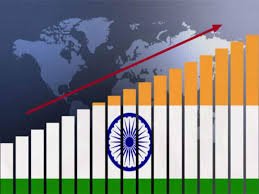Asian Development Bank Retains India’s Growth Forecast at 7% for FY25
India’s Growth Forecast Retained at 7%
The Asian Development Bank (ADB) has maintained its forecast for India’s GDP growth at 7% for FY25. This projection is based on expectations of a rebound in agriculture due to above-normal monsoon projections, despite a slower-than-expected monsoon onset in June. This growth forecast aligns with the International Monetary Fund’s recent revision, which also upgraded India’s GDP growth projection to 7%.
Consistent Growth Predictions
According to the ADB’s Asian Development Outlook (ADO) July 2024 edition, the Indian economy is on track to grow by 7% in FY24 and 7.2% in FY25. This forecast follows the Reserve Bank of India’s upward revision of its growth estimate from 7% to 7.2% for FY24.
Sectoral Performance
India’s economic performance in FY24 included a robust 8.2% growth rate, driven by significant contributions from the services sector. The Services Purchasing Managers’ Index (PMI) remains well above its long-term average, indicating continued expansion. Additionally, the manufacturing and construction sectors, particularly housing, are expected to support industrial growth.
Investment and Export Dynamics
Public investments and bank credit are fueling strong housing demand and improving private investment. While export growth is anticipated to be led by services, merchandise exports are expected to show relatively weaker growth. A stronger-than-expected fiscal position of the central government may further boost growth, though risks from weather events and geopolitical shocks persist.
Inflation Outlook
The ADB has also retained its inflation forecast for India at 4.6% for the current financial year, with a slight decline to 4.5% expected in the next fiscal year. This stability in inflation forecasts suggests a balanced economic outlook.

Why This News Is Important
Economic Planning and Policy
The retention of India’s growth forecast by the ADB is crucial for policymakers and economic planners. It reinforces confidence in the current economic strategies and policies, particularly those targeting agricultural and industrial sectors. This stability allows for more accurate future planning and resource allocation.
Investor Confidence
For domestic and international investors, consistent growth projections by respected institutions like the ADB and IMF provide reassurance. It signals a stable investment environment, encouraging both foreign direct investment and domestic investments in various sectors, thereby supporting overall economic growth.
Impact on Employment
A strong GDP growth forecast directly impacts job creation. Growth in sectors such as agriculture, manufacturing, and services suggests increased employment opportunities, which is vital for addressing the unemployment challenge in a growing economy like India.
Inflation Management
The ADB’s inflation forecast highlights effective inflation management by the Indian government and central bank. Stable inflation is essential for maintaining purchasing power and ensuring sustainable economic growth, benefiting consumers and businesses alike.
Exam Relevance
For students preparing for government exams, understanding these economic forecasts helps in comprehending current economic scenarios, policies, and their implications. It provides context for questions related to economic planning, growth, and policy impacts, which are common in competitive exams.
Historical Context
ADB’s Role in India’s Development
The Asian Development Bank has been a key partner in India’s development journey. Since its inception, ADB has provided significant financial and technical assistance to various sectors, including infrastructure, energy, and social development. This partnership has been instrumental in supporting India’s economic reforms and development projects.
Previous Growth Trends
India has experienced fluctuating growth rates over the past decades. The growth rate peaked at over 10% during the early 2000s, driven by economic liberalization and reforms. However, global economic conditions, domestic challenges, and policy decisions have influenced these rates. The recent stability in growth forecasts suggests a resilient economy capable of navigating challenges.
Key Economic Reforms
Several key reforms have shaped India’s economic landscape. The implementation of the Goods and Services Tax (GST), the Insolvency and Bankruptcy Code (IBC), and various digital initiatives have streamlined processes, improved the business environment, and enhanced economic efficiency. These reforms continue to play a significant role in shaping India’s growth trajectory.
Key Takeaways from ADB Retaining India’s Growth Forecast
| Serial No. | Key Takeaway |
|---|---|
| 1 | ADB retains India’s GDP growth forecast at 7% for FY25. |
| 2 | Growth driven by agriculture rebound and robust services sector. |
| 3 | Public investments and bank credit fuel strong housing demand. |
| 4 | Inflation forecast remains stable at 4.6% for FY24. |
| 5 | Consistent growth projections boost investor confidence. |
Important FAQs for Students from this News
Q1: What is the Asian Development Bank (ADB)?
The Asian Development Bank (ADB) is a regional development bank established in 1966 to promote social and economic development in Asia.
Q2: Why is the ADB’s growth forecast for India important?
ADB’s growth forecast is crucial as it influences investor confidence, economic planning, and policy-making decisions. It also helps in assessing the economic stability and future prospects of the country.
Q3: What factors contribute to India’s projected GDP growth?
Key factors include a rebound in agriculture due to favorable monsoons, robust performance in the services sector, strong public investments, and improved private investment driven by housing demand and bank credit.
Q4: How does a stable inflation forecast benefit the economy?
Stable inflation maintains purchasing power, supports sustainable economic growth, and ensures a balanced economic environment, benefiting consumers and businesses.
Q5: How do growth forecasts impact job creation?
Higher GDP growth forecasts indicate increased economic activity, leading to more job opportunities across various sectors like agriculture, manufacturing, and services.
Some Important Current Affairs Links















